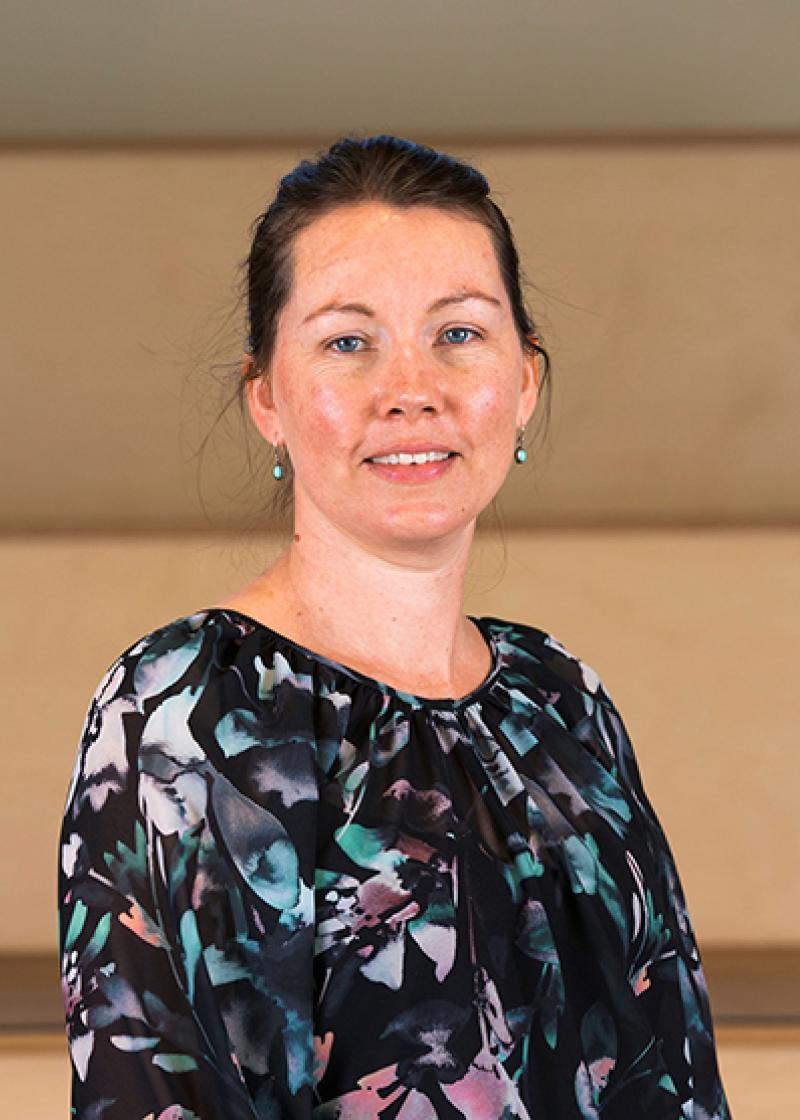Transcript
[Beginning of recorded material]
[Title card animation: Dementia Australia Research Foundation - Treat]
[Dr Janet van Eersel, Macquarie University]
Dr Janet: I am Janet van Eersel, and I work in the Dementia Research Centre at Macquarie University, and I lead a drug discovery team here. Dementia is an umbrella term for a number of different disorders, and they're all characterised broadly by impairments such as memory impairments, language impairments, behavioural impairments. When we look at the brains of people with dementia, when we look at their cells, we can see that there's this abnormal clumping of proteins, and one of those proteins is known as the protein tau. And so, basically, these proteins normally play a really important role in the nerve cells of the brain, but for reasons that we don't really understand, it will start to self-clump. So, one tau is in another tau, they clump together, then another one will come along and they eventually form a very big, what we call "tangle". So, they will get bigger, their properties will change a bit, and they mature, and they become this tangle that sits inside the brain cells.
Scientists have known for a very long time about these tangles so, in the past, we've always thought that they were doing bad things, they were really bad for the brain. But now, there's some new research that's starting to come out that shows that it's not necessarily the mature tangles that are causing so much damage, it's actually the smaller, I guess, pre-tangle aggregates. So, when there's, maybe, perhaps only just three or four of these taus hanging out together, that's when we think the real damage is going on.
In this project, what we want to do now is identify chemicals or drugs that will stop new tangles from forming - so target the very small tau molecules that are getting together without dissolving or disrupting the mature tangles. We've already identified some potential candidates that we think can target the small aggregates without touching the big mature tangles. So, we're now working on these, trying to refine them, trying to make them more potent at their job, trying to make sure that they can get across the blood-brain barrier - so enter the brain, trying to make sure that they don't have too many side effects. And we are trying to then, once we're happy with those properties of our compounds of our drugs, we then want to test them in cells. If they look like they're working and look promising in the cells, then move on to our mouse models of dementia. The funding that I received from Dementia Australia Research Foundation will go towards refining, doing the medicinal chemistry to refine our compounds and make them as perfect as can be. It'll go towards the cells that we need to then test the compounds, and then, ultimately, also for breeding our mouse models and housing them.
I'm in a really unique position because the Dementia Australia Research Foundation have actually funded two projects that I'm working on. So, this one working on tau, and then a completely different one working on a completely different mechanism. We'd believe it's really important to approach this task of finding a treatment from multiple different angles, so not putting all our eggs in one basket. And that's, I think, the way that we hopefully will eventually get to a treatment faster, by looking at it from different angles and different points of view.
[Title card]
This research is supported by:
The Royce Simmons Foundation Mid-Career Research Fellowship
Dementia Research Centre, Macquarie University
Dr van Eersel would like to acknowledge the research team:
Dr Liming Hou, Dr Daryl Ariawan, Professor Lars Ittner,
Professor Michael Kassiou and Dr Jonathan Danon
We thank the Royce Simmons Foundation for its support.
[End title card]
[Title card]
Dementia Australia Research Foundation:
A cure is just the beginning
If you would like to see dementia research make real impact, donate today:
1300 636 679
www.dementia.org.au/donate-research
[End title card]
[END of recorded material]


